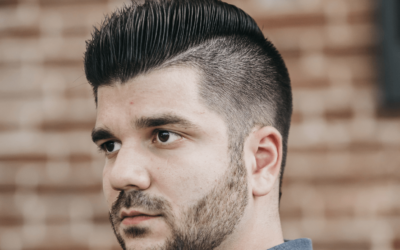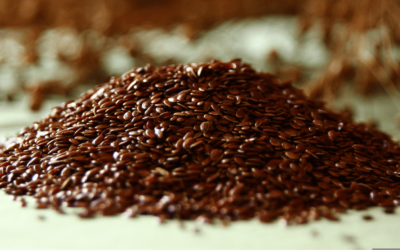Wavy hair is a beautiful and versatile hair texture that can exude a sense of effortless charm. However, it requires specific care and attention to keep those waves looking their best.
In this comprehensive guide, we will explore essential tips, techniques, and product recommendations to help you care for and enhance your wavy hair. From daily routines to styling methods, we’ve got you covered.
Understanding Your Wavy Hair
Hair Type Identification
First, identify your hair type within the wavy category. Wavy hair falls into different subcategories, including 2A, 2B, and 2C, depending on the level of wave and texture.
Understanding your specific hair type will guide you in selecting the most appropriate products and techniques for your wavy hair care routine.
Porosity Awareness
Consider your hair’s porosity, which refers to how well it can absorb and retain moisture. Low porosity hair tends to resist moisture, while high porosity hair easily absorbs and loses moisture.
Knowing your hair’s porosity will help you choose the right products and treatments to maintain optimal moisture balance.
Washing and Conditioning Wavy Hair
Choosing the Right Shampoo and Conditioner
Opt for sulfate-free shampoos and conditioners specifically formulated for wavy hair. These products gently cleanse without stripping away natural oils, helping to maintain the integrity of your waves.
Frequency of Washing
Wavy hair tends to be drier than straight hair, so washing every 2-3 days is usually sufficient. However, adjust the frequency based on your hair’s needs and lifestyle factors.
Conditioning Techniques
Apply conditioner from mid-length to ends, focusing on the areas where your hair tends to be the driest. Comb through with your fingers or a wide-toothed comb to detangle and distribute the product evenly.
Leave-In Conditioner
Consider using a leave-in conditioner to provide extra moisture and enhance the definition of your waves. Apply it to damp hair and scrunch gently to encourage wave formation.
Styling and Enhancing Your Waves
Scrunching Technique
After washing and conditioning, apply a curl-enhancing product to damp hair. Scrunch your hair from the bottom upwards, using your palms to create defined waves.
Allow your hair to air dry or use a diffuser attachment on a low heat setting.
Plopping Method
Plopping is a technique that involves wrapping your wet hair in a cotton T-shirt or microfiber towel to enhance wave definition and minimize frizz.
Leave your hair wrapped for 15-30 minutes before releasing it and allowing it to air dry or using a diffuser.
Avoiding Touching Your Hair
Refrain from touching or combing your hair excessively throughout the day. Excessive manipulation can disrupt the wave pattern and cause frizz. Instead, gently scrunch your hair when needed to revitalize your waves.
Protective Hairstyles
Consider wearing protective hairstyles, such as braids or loose buns, to prevent excessive friction and reduce tangling, especially during sleep or physical activities.
Controlling Frizz and Maintaining Definition
Microfiber Towel or T-Shirt Drying
Swap your regular towel for a microfiber towel or a soft cotton T-shirt to blot excess water from your hair. This helps reduce frizz and prevents rough towel fibers from disrupting your wave pattern.
Anti-Frizz Serums or Creams
Apply a small amount of anti-frizz serum or cream to your damp or dry hair to tame frizz and flyaways. Focus on the mid-lengths and ends, avoiding the roots to prevent weighing down your waves.
Refreshing Your Waves
On non-wash days, refresh your waves by lightly spritzing your hair with water and applying a small amount of curl-refreshing spray or leave-in conditioner. Scrunch your hair gently to reactivate the waves.
Protecting Your Waves from Heat Damage
Heat Protectant Spray
Prior to using heat-styling tools like curling irons or straighteners, apply a heat protectant spray to shield your waves from the damaging effects of high temperatures.
Heatless Styling Options
Embrace heatless styling methods to create waves or curls. Try braiding your damp hair before bed or using foam or fabric curlers to achieve soft waves without heat.
Deep Conditioning Treatments
Regular Deep Conditioning
Treat your wavy hair to deep conditioning treatments at least once a week. Look for nourishing masks or deep conditioners specifically designed for wavy hair to replenish moisture and improve elasticity.
DIY Deep Conditioning
Explore natural DIY deep conditioning treatments using ingredients like avocado, coconut oil, honey, or aloe vera. These homemade remedies can provide intense hydration and promote healthy, bouncy waves.
Combating Humidity
Humidity-Proof Styling Products
Invest in styling products that offer humidity resistance to combat frizz caused by humid weather. Look for serums, gels, or creams with anti-humidity properties to keep your waves sleek and defined.
Protective Hairstyles for Humid Days
On particularly humid days, consider wearing protective hairstyles such as a top knot or a loose braid. These styles help to keep your hair away from excess moisture and minimize frizz.
Nighttime Hair Care
Satin or Silk Pillowcase
Swap your cotton pillowcase for a satin or silk one to reduce friction and minimize tangles while you sleep. These smoother fabrics help prevent frizz and keep your waves intact.
Pineapple Method
Try the pineapple method by loosely gathering your hair on top of your head in a loose high ponytail or bun before bed. This technique helps to preserve your waves overnight and prevent them from getting flattened.
Trimming Regularly
Routine Trims
Schedule regular trims every 8-12 weeks to maintain the health of your wavy hair. Trimming helps remove split ends and prevents them from traveling up the hair shaft, keeping your waves looking fresh and lively.
Embracing Natural Texture
Air Drying
Embrace your natural texture by air drying your hair whenever possible. Avoid using excessive heat from hairdryers to preserve your waves’ natural shape and minimize frizz.
Embracing Imperfections
Remember that wavy hair is unique, and not every wave will be perfect. Embrace the imperfections, as they add character and make your waves uniquely yours.
With these additional points, your blog post on wavy hair care will be even more comprehensive, informative, and helpful for readers seeking advice on caring for their waves.
Protecting Your Waves from Heat Damage
Heat Protectant
Before using any heat styling tools, apply a heat protectant spray or serum to shield your waves from damage. This extra layer of protection can help minimize the impact of heat on your hair.
Low Heat Styling
When using heat styling tools such as flat irons or curling wands, opt for lower heat settings to prevent excessive heat damage. Avoid using maximum heat and minimize the amount of time the heat is applied to your hair.
Avoiding Overwashing
Skip Daily Shampooing
Wavy hair tends to be more prone to dryness, so it’s best to avoid washing it every day. Aim to wash your hair 2-3 times a week to maintain its natural oils and prevent excessive dryness.
Dry Shampoo
On non-wash days, use a dry shampoo to refresh your roots and absorb excess oil. This will help extend the time between washes without sacrificing the appearance of clean hair.
Incorporating Hair Masks
Protein Hair Masks
Introduce protein-based hair masks into your routine to strengthen and nourish your wavy hair. These masks can help repair any damage and enhance the overall health and resilience of your waves.
Moisturizing Hair Masks
Consider using moisturizing hair masks that are specifically formulated for wavy hair. These masks deeply hydrate your strands, reduce frizz, and enhance the natural texture and definition of your waves.
Protecting Your Waves from Chlorine and Saltwater
Pre-Swim Protection
Before swimming in chlorinated pools or saltwater, wet your hair and apply a leave-in conditioner or hair oil. This creates a barrier between your strands and the harsh chemicals or salt, minimizing their drying effects.
Post-Swim Care
After swimming, rinse your hair thoroughly with fresh water to remove chlorine or salt residue. Follow up with a hydrating conditioner or hair mask to restore moisture and prevent any potential damage.
Embracing a Healthy Lifestyle
Balanced Diet
Maintain a balanced diet that includes essential nutrients such as vitamins, minerals, and proteins. A healthy diet contributes to the overall health and strength of your hair, promoting beautiful waves.
Hydration
Stay hydrated by drinking an adequate amount of water daily. Hydration is crucial for healthy hair growth and maintaining the moisture balance in your wavy hair.
By incorporating these additional points, your blog post on wavy hair care will provide even more valuable information and guidance to readers looking to enhance the beauty and manageability of their waves.
Conclusion
Wavy hair is a beautiful asset that deserves special care and attention. By following these tips and incorporating them into your hair care routine, you can enhance the natural beauty of your waves and maintain their health and vitality.
Remember to embrace your unique texture, experiment with different products and techniques, and have fun styling your wavy hair.
















